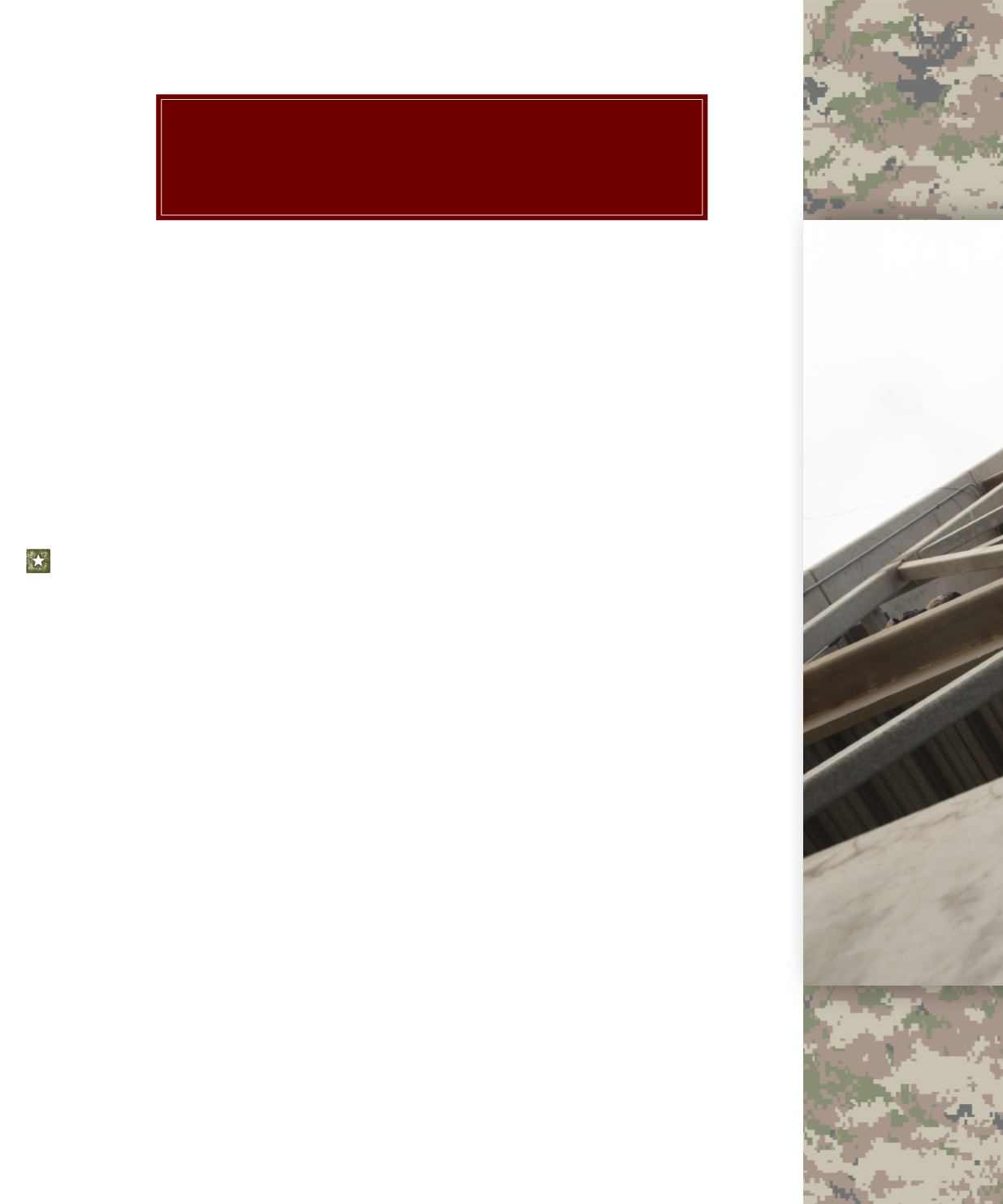
20
Marine Force Recon
Fast-roping and other
HRST are practiced from
land-based towers as
well as aircraft.
process concludes with a lengthy interview to evaluate the can-
didate’s suitability to continue.
Many Marines fail the first time. They are allowed to take the
screening as often as they want. Multiple attempts speak highly
of their motivation. Money isn’t part of that motivation. With
few exceptions, Force Recon members are paid the same as other
Marines of equal rank and length of service.
Those who pass recon screening take the 59-day Basic Recon-
naissance Course (BRC). This three-phase course is held at Cali-
fornia’s Camp Pendleton, situated between Los Angeles and San
Diego. Phase 1 focuses on cultivating physical skills. Trainees do
a lot of running and high-repetition physical training to develop
stamina. They also negotiate obstacle courses, learn land naviga-
tion with a map and compass, do numerous fast hikes wearing a
rucksack over steadily increasing distances with steadily increas-
ing weights, and swim in the ocean. The ocean temperatures vary
widely, from a relatively balmy 75 to 80 °F (24 to 27 °C) in July and
August to a bone-chilling 45 to 59 °F (7 to 15 °C) in February.
Some of the most important skills trainees practice are heli-
copter rope suspension techniques (HRST). HRST are used in in-
sertions and
extractions
where helicopters cannot land. These
methods include fast-roping, in which the Marine uses his hands
and feet to slide down a thick rope as quickly as possible. Be-
cause several men can be on the same rope, this is the fastest
method of insertion. Another is rappelling, in which the Marine
coils a rope secured to the helicopter around his body and slides
down. Only one man can be on the rope at a time.
A third is Jacob’s ladder, a flexible ladder especially useful
for extractions. Perhaps the most dramatic is Special Personnel
Insertion/Extraction (SPIE), in which several men wearing har-
nesses hook themselves onto D-rings that are fastened to a rope
suspended from a helicopter. The aircraft lifts off with the men
dangling beneath it and carries them to a secure insert zone.
FORCE FACTS
Camp Pendleton was established in 1942 to train
Marines for combat in the Pacific. It is named after Major General Jo-
seph H. Pendleton, a longtime advocate for West Coast Marine training.


